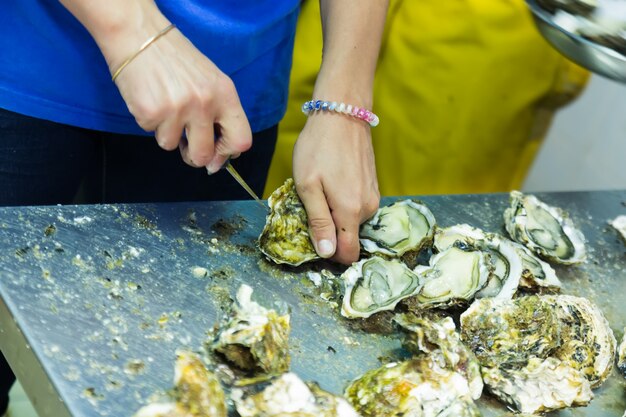For many food lovers, seafood is the ultimate indulgence. There’s nothing quite like cracking into a freshly steamed lobster or slurping down an ice-cold oyster, knowing you’re experiencing something truly special. But let’s be real—luxury seafood at nearest seafood restaurants to me often comes with a hefty price tag.
The good news? You don’t have to empty your wallet to enjoy high-quality seafood. With a few smart tips and a little know-how, you can enjoy delicious, high-end seafood without spending a fortune. Let’s dive into the best ways to enjoy lobsters, oysters, and other luxury seafood while keeping your budget in check.
1. Buy Seafood in Season
Just like fruits and vegetables, seafood has seasons. When certain shellfish are in peak supply, they tend to be more affordable, fresher, and tastier.
For example:
- Lobster prices drop in late summer and early fall when catches are at their highest.
- Oysters are at their best in cooler months (September to April) because they spawn in summer, which can affect their flavor and texture.
- Crab is most affordable in the fall when harvests are at their peak.
Checking local seafood seasons helps you get the best quality at the best price. If you’re not sure, ask your fishmonger or check sources like the National Oceanic and Atmospheric Administration (NOAA) for sustainable seafood guides.
2. Skip the Fancy Restaurant – Cook at Home
There’s no denying that seafood dishes in restaurants can be pricey. A lobster dinner at a fine dining spot can easily set you back $50 or more, while an order of fresh oysters could cost $3–$5 per piece.
But here’s a secret: cooking seafood at home is easier than you think and can save you 50% or more compared to restaurant prices.
Take lobsters, for example. You can buy live lobsters from a seafood market for $10–$15 per pound, while a restaurant might charge triple that amount. Cooking them is as simple as boiling water and melting some butter.
For oysters, all you need is a good shucking knife and a bit of practice. Buying fresh oysters directly from a seafood market can cost as little as $1 per oyster, making them an affordable treat when prepared at home.
3. Opt for Lesser-Known Luxury Seafood
When people think of luxury seafood to dine in seafood restaurant near me, they usually picture lobster, king crab, and oysters. But there are plenty of delicious, high-end alternatives that are just as indulgent—and far more affordable.
Here are a few to try:
- Langoustines – Also called Norway lobsters, these small, sweet shellfish have a similar taste to lobster but cost significantly less.
- Mussels – Often overshadowed by oysters, mussels are just as delicious, packed with nutrients, and can cost as little as $3–$5 per pound.
- Snow Crab – While king crab legs can cost over $40 per pound, snow crab is a more affordable and equally tasty alternative.
- Littleneck Clams – Oysters get all the attention, but littleneck clams are sweet, briny, and often half the price of premium oysters.
Trying different types of shellfish allows you to enjoy top-quality seafood at a fraction of the cost.
4. Take Advantage of Happy Hour and Seafood Specials
Many seafood restaurants offer happy hour deals, prix-fixe menus, and seasonal promotions that let you enjoy luxury seafood without overspending.
Look out for:
- Oyster happy hours, where you can get oysters for $1–$2 each instead of the usual $3–$5.
- Lobster roll specials, often found in summer when lobster prices drop.
- All-you-can-eat crab nights, which can be an incredible deal compared to ordering crab legs à la carte.
Checking local seafood restaurants for deals can help you indulge in luxury flavors at a discount.
5. Buy Frozen or Pre-Cooked Seafood
Many people assume that fresh seafood is always better, but that’s not always the case. Frozen seafood is often cheaper, just as fresh, and easier to store.
For example:
- Frozen lobster tails can cost up to 30% less than live lobsters and are easier to prepare at home.
- Pre-shucked frozen oysters are a great alternative for recipes that don’t require them to be raw, like oyster stew or Rockefeller.
- Frozen crab legs are often pre-cooked and just need to be steamed or baked before serving.
Thanks to modern freezing technology, frozen seafood maintains its quality, taste, and texture, making it a budget-friendly alternative to fresh.
6. Buy Direct from Local Seafood Markets
Grocery stores mark up seafood prices significantly, but if you buy directly from a local fishmonger or seafood market, you can often find better deals.
Some of the best places to buy high-quality, affordable seafood include:
- Local fish markets – Many will sell directly to the public at wholesale prices.
- Dockside seafood vendors – In coastal areas, fishermen sometimes sell fresh catch straight from the boat.
- Seafood co-ops – Some communities have co-op programs where you can buy fresh seafood directly from local fishermen.
Buying local not only helps you save money but also supports sustainable fishing practices.
Enjoying Luxury Seafood Without the Luxury Price
Indulging in high-end seafood doesn’t have to mean spending a fortune. By following these smart seafood-buying tips, you can enjoy restaurant-quality lobster, oysters, and shellfish at home or at your favorite seafood spot—without breaking the bank.
The key is to be strategic about when and where you buy, embrace lesser-known luxury seafood, and take advantage of deals, frozen options, and local sources.
So, the next time you’re craving a buttery lobster tail or a platter of briny oysters, you’ll know exactly how to get it without overspending. Happy seafood feasting!







